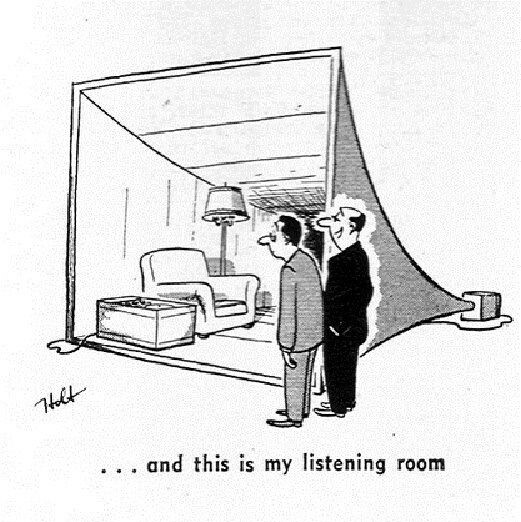Rather than reducing speaker desirability or pairing to a simple question of sensitivity, an increased understanding of the complex relationship between amp and speaker, sensitivity, load characteristics, available power and load tolerance, creates the opportunity for more successful, more cos-effective and ultimately higher-performance systems. Let’s use the Dragon Legacy as our example again. The Peak speaker likes power but it loves to be bi-amped. Of course, you need to bi-amp correctly: that means bi-amping vertically, an arrangement that uses identical amplifiers on each leg of the speaker’s crossover (thus not dis-integrating what the designer has fought so hard to integrate) while halving the demand on each amplifier’s power-supply. That opens up a stepped upgrade path and allows you to use smaller and far more affordable amplifiers while achieving superior results – largely because a deeper understanding of the speaker’s demands informs you that amplifiers with reasonable power, rather than an emphasis on ultimate (and, ultimately expensive) load tolerance are the order of the day. The end result is the possibility of a cheaper, better system – which is kinda what we’re all aiming for – no?
 Experience suggests that, in practice it’s often easier – or at least less expensive and musically damaging – to build sensitivity into a speaker than power into an amplifier. The really good, high-powered amps I’ve used have all, invariably been extremely expensive. Relatively sensitive speakers with modest drive requirements can be relatively affordable, especially if you are prepared to accept limited bandwidth and higher colouration levels – the latter not the issue it’s often made out to be. Pair them with musically coherent, competent but affordable amplifiers, especially in a bi-amped configuration and the results can be astonishing. The Living Voice Auditorium series are the perfect case in point: sensitive enough and with sufficient bass to satisfy, small enough to accommodate and bi-ampable, drive them with a pair of Neodio’s affordable power amps (or something else that takes your fancy) and you are ready to rock’n’roll – or jazz, or classical, or bubble-gum pop if that’s your thing. The point is that you end up with a system that’s as musically satisfying as it is remarkably affordable. Not because the speakers are super high-sensitivity: they aren’t, but moderate sensitivity, an easy load and moderate power is a match made in heaven. The bi-amped set-up and choice of amps exploit the speakers design characteristics and advantages to the full, creating a combination that’s greater than the sum of the parts. Sensitivity plays its part, but mainly because, in combination with the benign demands the speakers present to the amplifier(s), it creates an opportunity to be seized and exploited.
Experience suggests that, in practice it’s often easier – or at least less expensive and musically damaging – to build sensitivity into a speaker than power into an amplifier. The really good, high-powered amps I’ve used have all, invariably been extremely expensive. Relatively sensitive speakers with modest drive requirements can be relatively affordable, especially if you are prepared to accept limited bandwidth and higher colouration levels – the latter not the issue it’s often made out to be. Pair them with musically coherent, competent but affordable amplifiers, especially in a bi-amped configuration and the results can be astonishing. The Living Voice Auditorium series are the perfect case in point: sensitive enough and with sufficient bass to satisfy, small enough to accommodate and bi-ampable, drive them with a pair of Neodio’s affordable power amps (or something else that takes your fancy) and you are ready to rock’n’roll – or jazz, or classical, or bubble-gum pop if that’s your thing. The point is that you end up with a system that’s as musically satisfying as it is remarkably affordable. Not because the speakers are super high-sensitivity: they aren’t, but moderate sensitivity, an easy load and moderate power is a match made in heaven. The bi-amped set-up and choice of amps exploit the speakers design characteristics and advantages to the full, creating a combination that’s greater than the sum of the parts. Sensitivity plays its part, but mainly because, in combination with the benign demands the speakers present to the amplifier(s), it creates an opportunity to be seized and exploited.
Start thinking in this way and the opportunities start to multiply, not just through better performance but through a wider range of (occasionally surprising) equipment combinations. For years, audio systems have revelled in overkill, but looked at in terms of specific pairings and system contexts and that overkill is often over-priced and equally often, detrimental, undermining the performance it is supposed to guarantee. As Nevil Shute famously stated in his novel Slide Rule, “an engineer is a man who can do for ten shillings what any fool can do for a pound…” He wasn’t wrong – but it’s something that seems to have escaped the audio community. When it comes to balancing a system, more isn’t necessarily better and can be worse, especially in terms of the cost/performance equation. To maximise musical and monetary value, what’s required is (just) enough of the right stuff arranged in the right way – and that’s where a deeper understanding of the amplifier/speaker relationship comes in.

